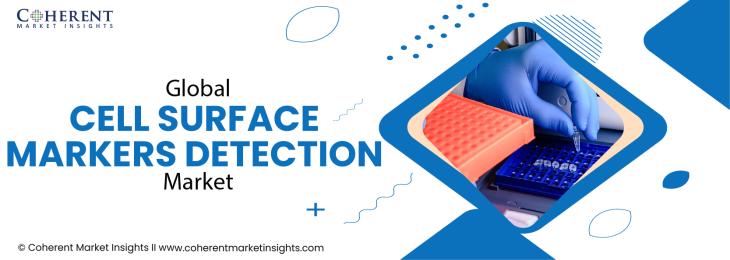
By suspending the cell in a stream of fluid and then putting it through a detection device, the flow cytometry technique is used for cell counting, biomarker detection, cell sorting, and protein engineering. It is the best method for locating, describing, and isolating stem and progenitor cells for study and future clinical use. The segment is anticipated to rise over the projected period due to the rising usage of flow cytometry in stem cell research and the rising applications of flow cytometry in clinical research. For instance, the National Clinical Trial Registry (NCT) reports that as of April 21, 2021, there were roughly 320 clinical trials relating to stem cell therapy registered in Germany, spanning various stages of development.
During the projected period, it is predicted that the market for the Cell Surface Markers Detection will grow at a CAGR of 8.2%.
Key Companies in the Cell Surface Markers Detection Industry:
1. Abbott Laboratories: Abbott produces and sells branded generic pharmaceuticals, adult and paediatric nutritional items, diagnostic tools, and testing kits. Built in 1888. Head office in North Chicago, Illinois, USA.JETi (Sep 2021) Cephea Valve Technologies (Jan 2019), and St. Jude Medical (Apr 2016) are the most recent acquisitions.
2. Danaher Corporation (Beckman Coulter Inc.): Danaher's founders changed a real estate firm into an industrial-focused manufacturing firm in 1984. Danaher today primarily manufactures scientific instruments and consumables in three segments: life sciences, diagnostics, and environmental and applied solutions, as a result of a sequence of mergers, acquisitions, and divestitures. The company announced plans to exit its environmental and applied solutions groups in 2023, leaving it only focused on life sciences and diagnostics in late 2022.
3. Bio Rad Laboratories Inc.: Built in 1952. With its headquarters in Hercules, California, Bio-Rad Laboratories creates, produces, and sells goods and services for the clinical diagnostics and life sciences industries. Bio-Rad produces, markets, and maintains test systems and specialised quality controls for clinical laboratories in the diagnostics sector (53% of revenue). The company creates and produces a variety of tools and reagents for use in research, the production of biopharmaceuticals, and food testing in the life sciences sector (47% of revenue). Major markets for the corporation are found in the Americas, Europe, Africa, and Asia-Pacific. Sartorius AG, a supplier of lab supplies and biopharmaceuticals, is 37% owned by Bio-Rad. Acquisition of Curiosity Diagnostics by Bio-Rad.
4. F. Hoffmann-La Roche Ltd: Established on October 1st, 1896. Headquarters in the United States. Tasmar's rights to production, marketing, and distribution in the United States and a few other non-European Union areas. Parkinson's illness is managed with the medication tasmar.
5. Qiagen NV: Established in 1984. Headquarters are located in Hilden, Germany. Qiagen provides proprietary sample and assay technologies for the extraction, purification, amplification, and interpretation of DNA, RNA, and proteins. The sales of the company are roughly evenly split between applications in life sciences and molecular diagnostics. Qiagen's revenue is almost entirely comprised of consumables, with the remainder coming from instruments and related services. The Americas generate the most revenue for the company (45% of 2021 sales), followed by EMEA (36%), and Asia-Pacific (19%).
6. Thermo Fisher Scientific Inc.: Established in 1956. Headquarters in the United States. Thermo Fisher Scientific sells reagents for life sciences, laboratory supplies, and equipment for diagnostics. As of mid-2023, the company works through four segments: analytical technologies (16% of sales); speciality diagnostic products (10% of revenue); life science solutions (24% of revenue); and lab goods and services, which includes CRO services (54% of revenue).
7. Agilent Technologies Inc.: Established in 1999. Headquarters are in the United States. Agilent, which was split off from Hewlett-Packard in 1999, has grown into a premier life sciences and diagnostics company. Agilent's measuring technologies now serve a diverse range of clients through its three operating segments: life science and applied tools, cross lab (consisting of life science and applied tools consumables and services), and diagnostics and genomics. Agilent Purchases Artificial Intelligence Technology to Increase Lab Productivity.
*Definition: The way we are able to distinguish cell types from one another is by using cell surface markers. Cell surface markers are proteins and carbohydrates which are attached to the cellular membrane, allowing cell surface markers to play an integral role in intercellular signaling.










